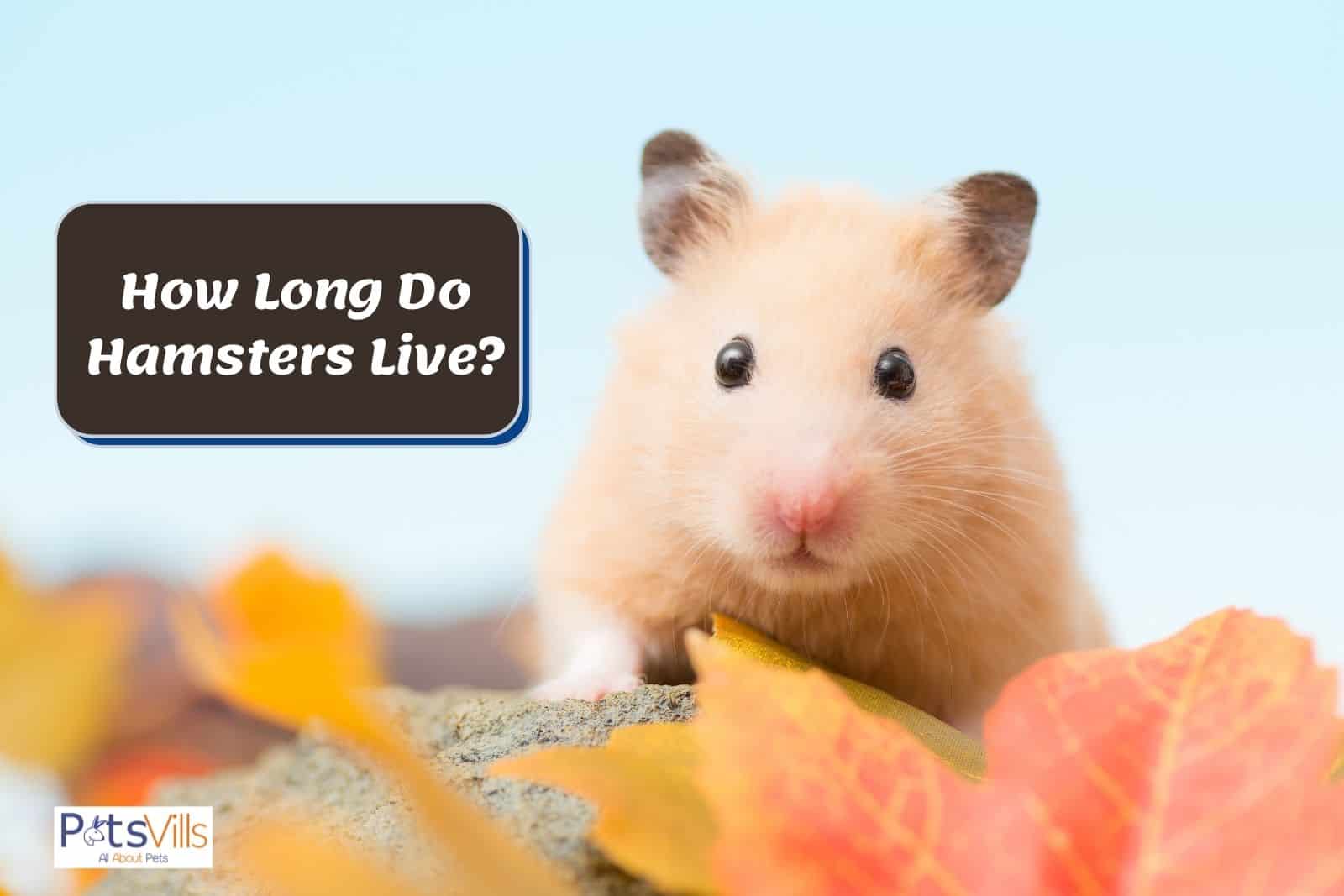How long do hamsters live? It’s vital to consider when deciding whether to buy a hamster or care for one.
So I decided to create a comprehensive look at the lifespans of these creatures.
It’ll also include what owners can do to maximize their hamster’s lifespan.
You’ll soon know everything to ensure your hammy can thrive for as long as possible.
Table of Contents
Quick Summary
- The average lifespan of a hamster will be between one and three years, depending on the care they receive.
- Different breeds of hamsters do have longer average lifespans than others. Russian dwarfs are known for having the shortest, while Roborovskis have the longest.
- Owners can help extend a hamster’s lifespan by offering a well-balanced diet and proper habitats, following excellent care procedures, and socializing them.
How Long Do Hamsters Live?
Most hamsters will live anywhere between one and three years. Sadly, these adorable critters won’t have the same longevity as other common pets.
But this range is only an average, with various factors being impactful. So there’s quite a bit of variation and elements at play that could affect how long they live.
Later, I’ll show you ways to help increase a hamster’s lifespan.
But first, I want to discuss a pet hamster’s average lifespan compared to a wild one. Then, it’ll provide a bit more background about why these pets don’t last too long.
Related: Why Do Hamsters Die So Quickly?
Wild Hamster Lifespan Vs. Captive Hamster Lifespan
Wild hamsters, often found in the Middle East, have even shorter lifespans than pet hamsters (1). Of course, they are in constant danger from larger predators.
These predators include “common buzzards, lesser spotted eagles, red foxes, domestic dogs, ermines, and Eurasian badgers” (2).
In any case, wild hamsters don’t have the same level of protection as captive ones. It makes it much more vulnerable to other animals looking for a crunchy snack.
Climate fluctuations don’t help wild hamsters last longer, either. Instead, it can create an inhabitable environment even in native locations.
So it’s safe to gather those captive hamsters often last much longer than wild ones. It’s tough shedding out there for these little furballs.
Also Read: How Long Can I Leave a Hamster Alone?
Factors Affect the Lifespan of Hamsters
Depending on the inherited traits, external environmental effects, and health conditions, the life expectancy of hamsters differs.
Though some of these effects are completely up to you to control, the rest of the effects are uncontrollable. First, let us get to know about the controllable factors.
Controllable Factors
1. Healthy Diets
In general, hamsters can eat anything. You can give them fruits, vegetables, nuts, and even bread without any side effects. As hamsters are omnivores, you are free to mix up food to provide them with a balanced diet.
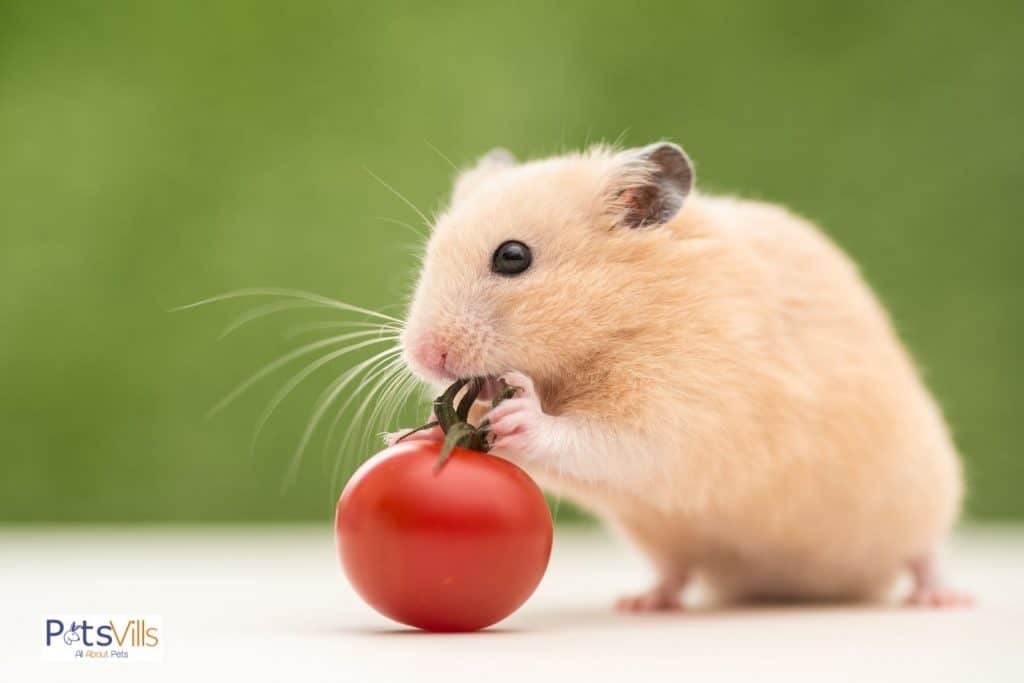
However, it is not bad to avoid commercial food cans and packets. Doubtlessly, your hamster can gain more nutrients from fresh fruits and vegetables than from packets, of preserved food. In addition to that, you know anything homemade is healthy.
Though hamsters can eat anything, here is a list of food that you should not serve them.
- Citrus
- Tomato
- Chocolate
- Raw potatoes or beans
- Any kind of onions
- Fruit seeds or peels
Since hamsters cannot digest these kinds of food, it is always good to avoid them. Also, by providing healthy food, you can contribute to the long lifespan of your companion.
2. Hygienic Condition
Though it is not necessary, make sure your hamster has a good hygienic condition. You will need to clean their cage at least once a week and provide regular brushing to your hamster. Also, change the bedding of your hamster once or twice per week.
The hamsters are clean animals. They do not like to stay in places that stink. If you are okay with washing the cage, go for it. It will refresh its habitat.
As for the cage size, you will need to purchase a cage with a dimension of 12 inches in width and about 12 inches tall. It is the minimum required size for a hamster habitat.
However, purchasing a cage longer than this size would be ideal because it will be more spacious for the hamster.
3. Safety
The hamsters are innocent animals. They need to feel safe and comfortable in your household. Therefore, it is important to think twice before deciding on a place to keep their cage.
If you have any other pets that the hamster is scared of, make sure the cage is placed in a separate area. The hamsters get scared often. Sometimes, they can even scare you.
So, it is necessary to make them feel your household is a safe place. Otherwise, they will be stressed out.
Want to know if hamsters are good pets for kids? Check out this video:
Uncontrollable Factors
Here is a list of uncontrollable facts about the lifespan of a hamster.
1. The Breed/type
The life expectancy of a hamster differs according to the breed.
2. Genes and Inherited Traits
As the same as humans, animals are also inherited certain traits from their breed and parents. The inherited genes and traits are completely out of control.
For instance, Syrian black hamsters have weak kidneys than other hamsters. It causes a shorter lifespan but no one can complain about that.
Do hamsters make good pets for kids? Check out this video:
Does Breed Type Affect a Hamster’s Lifespan?
Most hamster owners are well aware of the various hamster breeds. However, it’s crucial to understand your hammy’s classification because each one has a different average lifespan.
Your first step is to outline the common breeds for pet hamsters. Don’t worry; it’s not too strenuous, as most hammies belong to one of three breeds:
- Dwarfs (Siberian/Russian/Chinese)
- Syrians
- Roborovskis
Let’s dive into them to see how they stack up against each other. You can then get a better handle on the care needs of your hamster.
1. Dwarf Hamsters
Dwarf hamsters are a bit more interesting than Syrians and Roborvskis. After all, there are three different categories within this breed type.
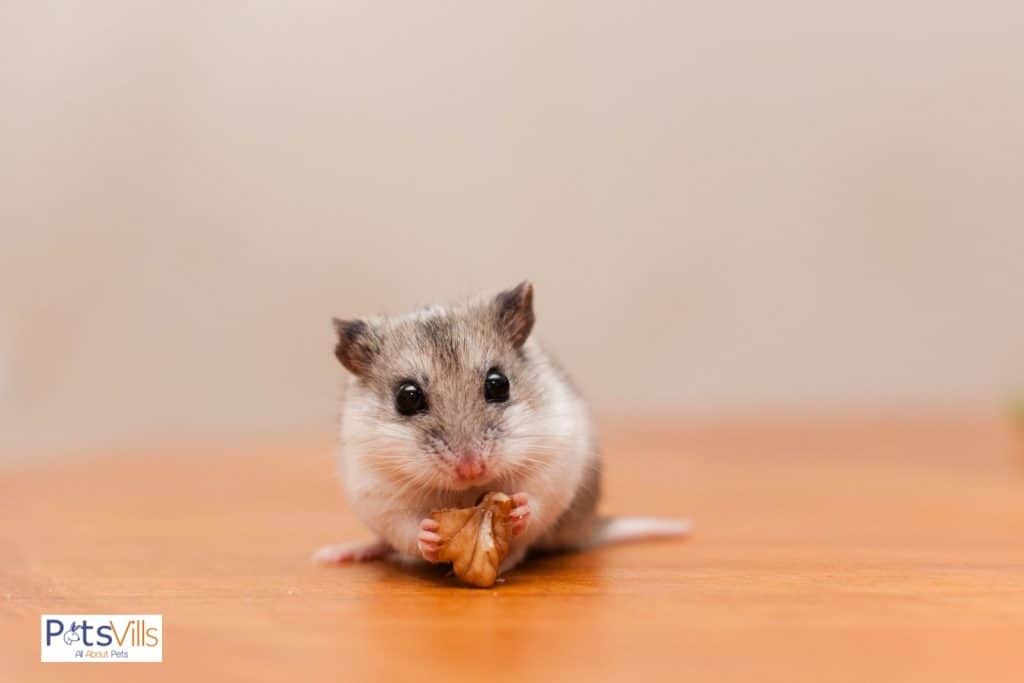
You have Russian dwarfs who get the short end of this stick. These tiny hamsters only have an average lifespan of about one to two years.
Meanwhile, Siberian dwarfs outkick this range by a few months. Siberian dwarf owners can expect an average of one ½ year to two years with proper care.
I consider Chinese dwarfs little cheaters because they aren’t actual dwarf hamsters. It’s more of a comment on their smaller size.
In any case, these striped hamsters will live longer than an actual dwarf hamster. Most experts put dwarf hamster lifespan to between 2-3 years.
2. Syrian Hamsters
Syrian hamsters, or golden hamsters, have long been the most common among pet owners. It stems from their golden appearance, which is adorable.
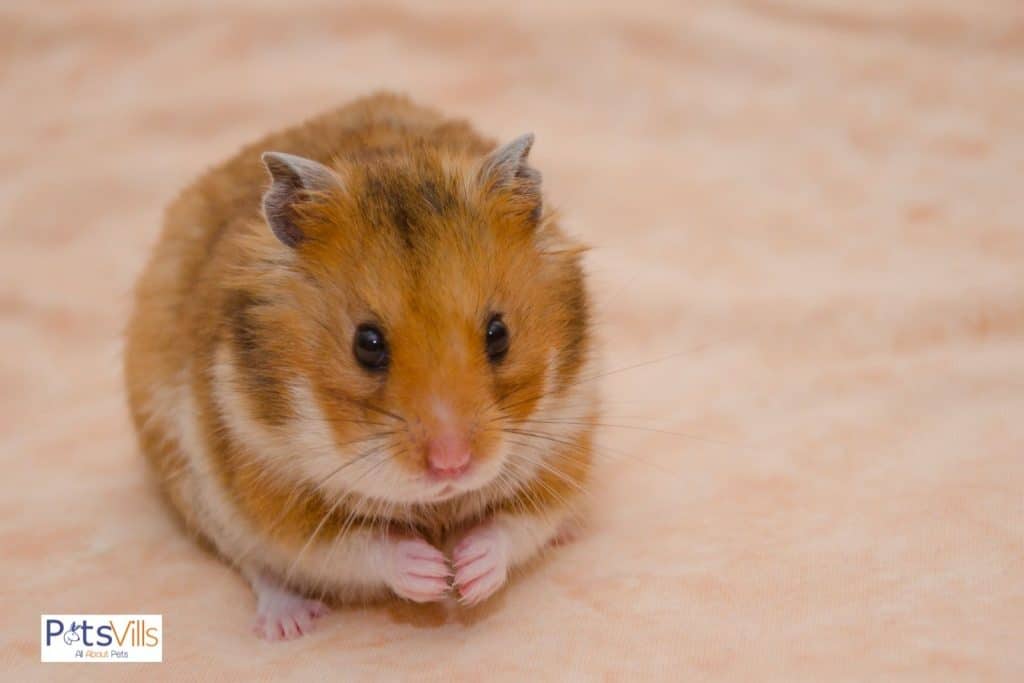
As for their lifespan, Syrian hamsters last a while longer than most dwarfs. You can usually expect them to live for two or three years, depending on the quality of care.
Another interesting tidbit about this breed is males often outlive Syrian female hamsters. You won’t see this outcome often in most species.
READ MORE: Hamster Dying Noises
3. Roborovski Hamsters
Roborovski hamsters earn the title of the longest-living breed. Owners can expect these little furballs to live for three to three 1/2 years.
It’s also worth noting that Roborovski hamsters are the smallest of these breeds. This is because many kids often love getting them over large breeds like Syrians.
In fact, my first pet was a Roborovski hamster. He was a perfect starter pet for someone who would grow to adore animals like me.
You can see how adorable they’re in this awesome video.
What Can You Do to Increase Your Hamster’s Lifespan?
Hamster owners can do several things to increase their hamster’s lifespan. The following actions should help ensure your hamster lives as long as possible:
1. Providing a Proper Diet
Giving your hamster a proper diet should always be a number one priority. These balanced diets will help provide the necessary nutrients and vitamins for healthy growth.
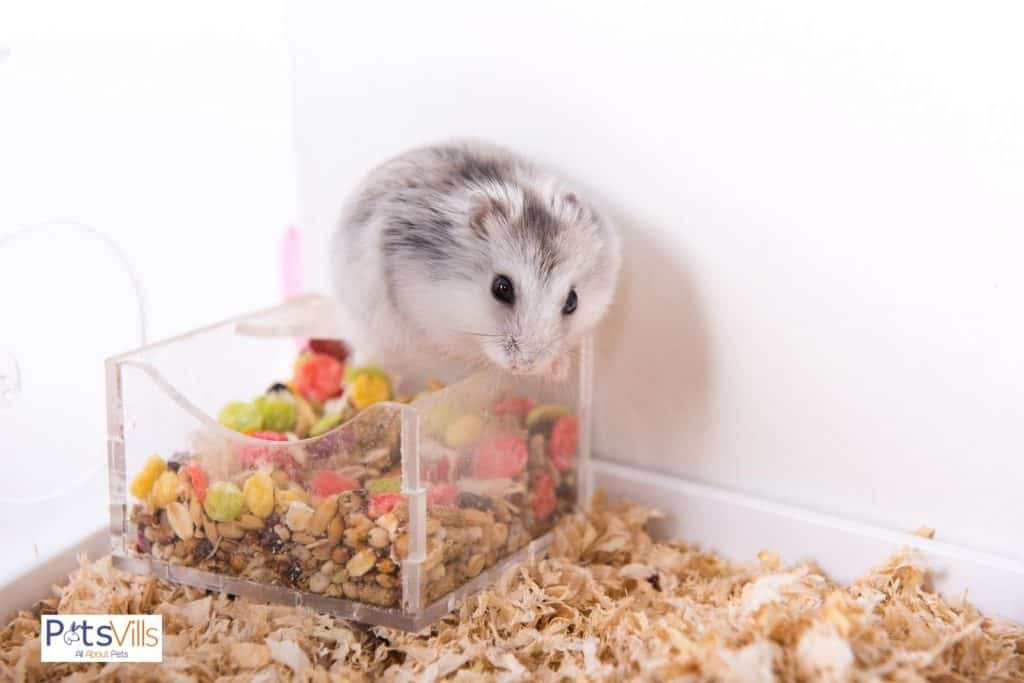
More importantly, owners will want to avoid giving pet hamsters too many sugary treats. It’ll only lead to serious health issues like obesity or diabetes (4).
I know avoiding these sugary treats is difficult because we all want to spoil them. But it’s essential to keep them alive for much longer.
If you have questions about hamster diets, check out “Complete Hamster Diet Feeding Guide: The Dos and Don’ts.” It’ll ensure you know how and what to feed your hamster.
2. Establishing a Well-Constructed Habitat
A hamster’s habitat needs to be perfectly suited to its needs. So it’ll all start with buying a cage that offers enough space for all their activities.
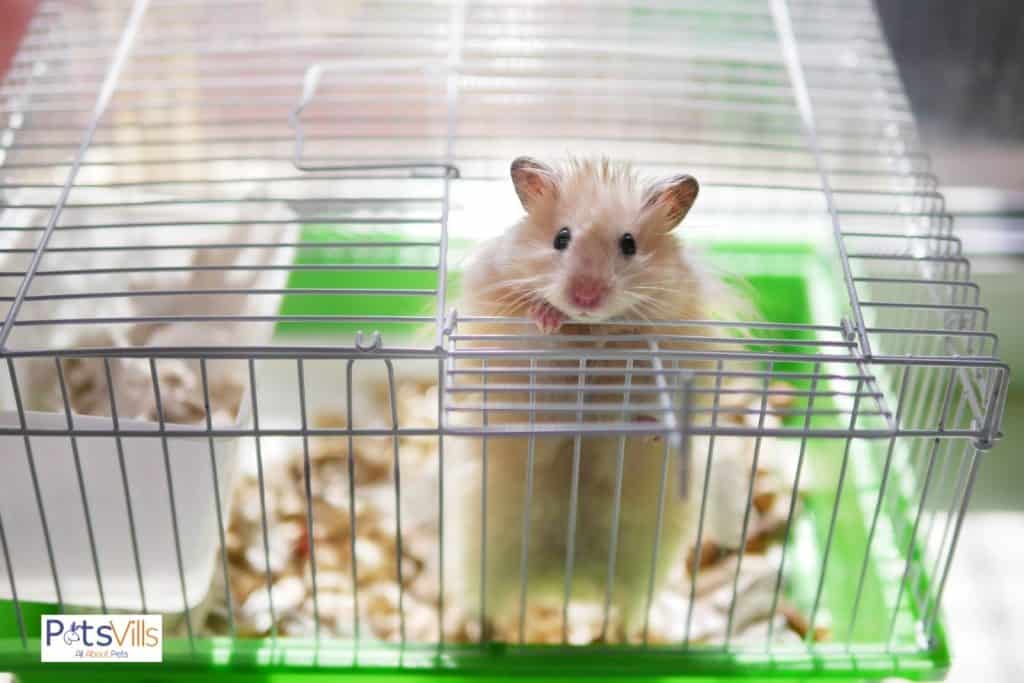
I always recommend choosing a cage made of stainless or heavy-duty plastic. Other available types are simply not ready to house our hammies.
Meanwhile, owners will want to choose a cage capable of fitting all their hammy’s essentials. It’ll need to house their nesting box, exercise wheel, food bowls, water bowls, and other equipment.
I’ve found that a cage size of 48″ x 12″ x 16″ or larger often handles these needs efficiently. As a result, your hamster will have more than enough space to do all its favorite activities.
This available room will help keep them active to prevent issues like obesity. So it’ll also help keep their minds stimulated and their brains sharp.
Furthermore, cage safety is crucial to prevent an escape or predators from getting into it. You’ll want a cage with a high-quality door with excellent security to stop both from happening.
I’ve had instances where I caught my cat trying to get into my hamster’s designated room. But even if he did get in, I’m very confident in my cage door staying solid.
3. Offering the Best Care Possible
Cleaning and maintaining your hamster’s habitat is crucial to keeping them alive. Owners must spot clean daily to remove any solid bedding material.
If this material is left inside the cage, it becomes a breeding ground for bacteria. The odds of your hamster getting sick increase significantly.
You’ll then want to do complete bedding changes whenever it gets too spoiled. If 2/3s of the bedding inside your hamster’s cage is soiled, it’s time to replace it.
Additionally, your hamster’s room must stay between 67-80 degrees with a humidity of 30 to 70%. This range will cultivate a pleasant environment for your hammy to stay happy and thrive.
4. Make an Effort to Socialize with Them
Socialization is a critical factor in providing a hamster with its best life. You’ll want them to become familiar with people and handling as soon as possible.
This process will also give them more opportunities to explore. Due to this, it’ll give them much more mental stimulation and exercise than a non-socialized hammy.
But don’t let people who are unfamiliar with handling hamsters do it. Instead, teach them the proper way, especially when it comes to children.
Once they learn the proper way, these people can handle your hamster. It should help prevent any accidents or injuries from occurring.
5. Regular Vet Visits
Keeping up with vet visits is a simple way to help your hamster live longer. I’d recommend going at least once a year or even six months if possible.
Doing so makes it much more likely that a vet will catch a health issue in time. You can also get constant updates on improving your hamster’s care and other tips.
FAQs
Can a hamster live for five years?
A hamster usually won’t live for five years. But there are some cases of captive hamsters reaching the 5-year mark, so yes, it’s possible.
Conclusion
How long do hamsters live? Well, it’s a safe bet to expect them to live anywhere between 1 and 3 years, depending on their breed.
But an owner can extend this range with proper care and attentiveness. So please, use what you’ve learned today to ensure your hammy lives as long as possible.
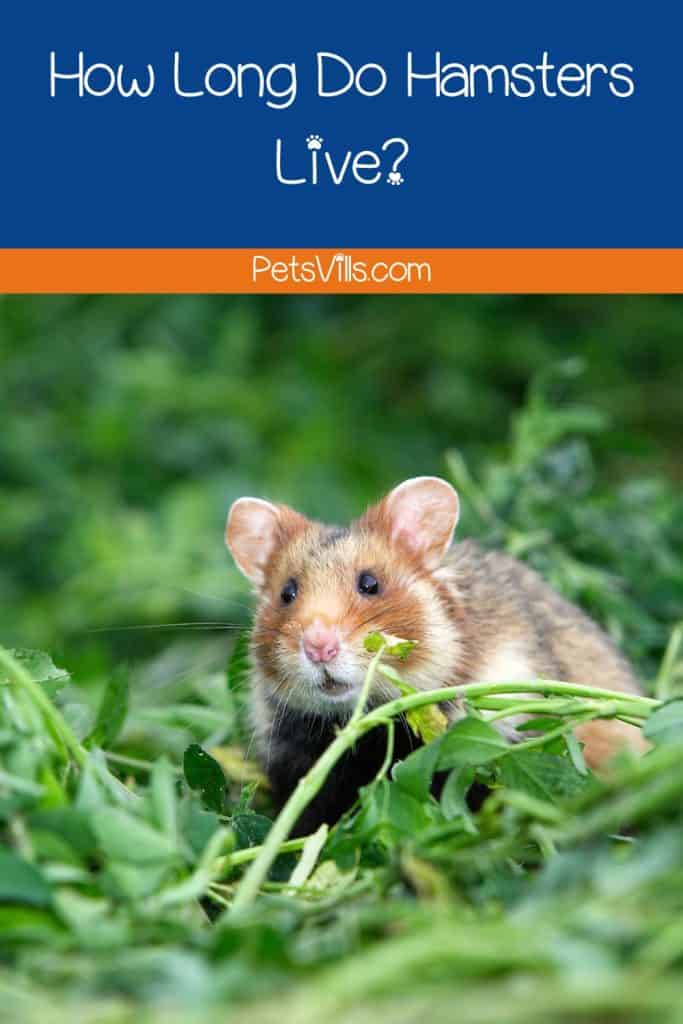
So, what do you think? How long do hamsters live? Let us know in the comments section!
Resources:
- 1. Your Hamster May Have Surprising Origins [Internet]. Animals. 2014. Available from: https://www.nationalgeographic.com/animals/article/hamsters-syria-aleppo-pets-animals
- 2. Poor A. Cricetinae (hamsters) [Internet]. Animal Diversity Web. Available from: https://animaldiversity.org/accounts/Cricetinae/#:~:text=Species%20that%20are%20known%20to
- 3. Hamster Care [Internet]. Available from: http://www.sbcounty.gov/uploads/dph/acc/content/programs/educational/hamster_care.pdf
- 4. Quigg M. Obesity in Hamsters | Moore Animal Hospital [Internet]. mooreanimalhospital.com. 2015 [cited 2022 Oct 24]. Available from: https://mooreanimalhospital.com/2015/07/01/fort-collins-co-vet-obesity-hamsters/

My name is Ben Roberts, and I absolutely love animals. So, naturally, I love writing about them too! As far as my animals, I have a Pit-bull, a Beagle-lab mix, a Chihuahua, and one old cat. Each one of them provides me with a new adventure every day. And the best part is they’re all best friends. Well, except the cat when he gets a little annoyed.
FIND HIM ON: FACEBOOK and TWITTER.
Read his latest ARTICLES
Learn more about Benhere

